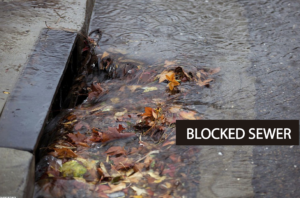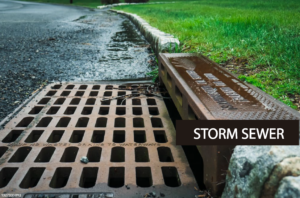WHAT IS A STORM SEWER?
Storm sewer inspection is crucial for several reasons:
Preventing Flooding: Regular inspections help identify and address blockages or malfunctions in the storm sewer system that could lead to flooding. By ensuring that storm sewers are functioning properly, communities can better manage runoff and prevent water from accumulating on streets and in properties.
Protecting Infrastructure: Storm sewers play a vital role in managing stormwater and runoff. If they’re not maintained, they can become damaged or clogged, leading to costly repairs or replacements. Inspections help catch issues early, preventing more significant damage and extending the life of the infrastructure.
Preventing Pollution: Storm sewers often carry runoff that may contain pollutants such as oil, chemicals, or debris. Regular inspections can help ensure that these pollutants are managed correctly and that the sewer system is functioning as intended, reducing the risk of contaminants entering natural water bodies.
Ensuring Compliance: Many jurisdictions have regulations and standards for stormwater management. Regular inspections ensure that storm sewers meet these requirements, helping to avoid fines and legal issues for municipalities or property owners.
Identifying Maintenance Needs: Inspections help pinpoint areas where maintenance is needed, whether it’s cleaning out debris, repairing damage, or upgrading components. This proactive approach can prevent more serious problems from developing and ensures that the system remains effective.
Improving Safety: A well-maintained storm sewer system reduces the risk of hazardous conditions, such as sinkholes or overflows, which can pose safety risks to the public. Regular inspections help maintain safety standards and mitigate potential hazards.
Peace of Mind: Knowing that storm sewers are in good condition provides peace of mind to both residents and local authorities.

Common causes of storm sewer blockages include:
- Tree Roots: Tree roots naturally seek out moisture and can infiltrate small cracks in the pipes, causing significant blockages and damage.
- Grease and Fat: Pouring grease, fat, and oil down the drain can lead to the accumulation of these substances in the sewer line. As they cool and solidify, they create stubborn blockages.
- Foreign Objects: Items such as paper towels, feminine hygiene products, and baby wipes can cause severe clogs if flushed down the toilet. These materials do not break down like toilet paper and can obstruct the sewer line.
- Pipe Damage: Old, corroded, or collapsed pipes can lead to blockages. Damage can occur due to shifting soil, heavy construction, or simply the aging of the pipes.
- Sediment and Debris: Over time, sediment and debris can build up in the sewer line, reducing the flow of wastewater and eventually causing blockages.
Preventing these blockages involves proper usage, regular maintenance, and being mindful of what goes down the drains. For example, avoid flushing non-flushable items and dispose of grease properly.
What’s Involved in Storm Sewer Inspections?
Inspections typically include:
- Observations of storm drains and all areas covered by the permit.
- Documentation of materials on-site that could come in contact with stormwater.
- Tracking of any materials or sediment that have gone off-site.
- Summarizing monitoring data collected during inspections.
Regular inspection and cleaning not only ensure the efficient operation of storm sewers but also help in preventing our city’s environmental pollution and infrastructure damage. As a business located in the heart of Sedalia, CO. We value ethical practices and sustainability for our planet and future generations.
In summary, storm sewer inspection is the key to effective storm water management, protecting Sedalia’s infrastructure, preventing It’s pollution, ensuring regulatory compliance, and safeguarding public’S safety. As DRC Construction Services, we offer high quality service throughout the Rocky Mountain region and sedalia’s area. You can find our office’s location at 4100 Rio Grande Ave, Sedalia, CO 80135.

